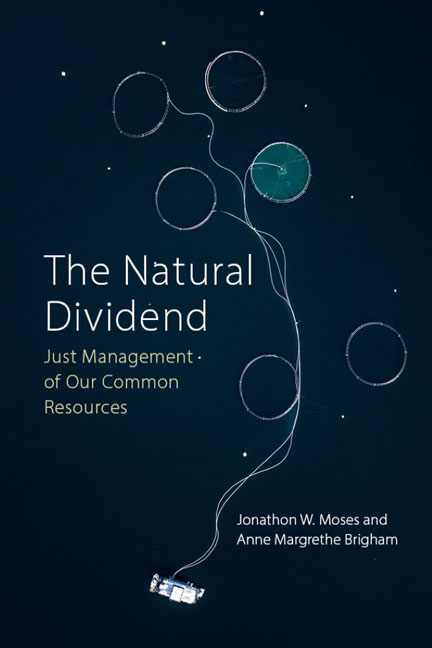Book contents
- Frontmatter
- Dedication
- Contents
- Acknowledgements
- Abbreviations
- 1 Introduction
- 2 Who owns the sun?
- 3 The Natural Dividend
- 4 The earth: the market for land
- 5 The sea: the market for salmon
- 6 The sky above: the market for renewable energy
- 7 The earth beneath: the market for fossil and mineral resources
- 8 A common market? The market for global resources
- 9 Conclusion
- References
- Index
2 - Who owns the sun?
Published online by Cambridge University Press: 20 January 2024
- Frontmatter
- Dedication
- Contents
- Acknowledgements
- Abbreviations
- 1 Introduction
- 2 Who owns the sun?
- 3 The Natural Dividend
- 4 The earth: the market for land
- 5 The sea: the market for salmon
- 6 The sky above: the market for renewable energy
- 7 The earth beneath: the market for fossil and mineral resources
- 8 A common market? The market for global resources
- 9 Conclusion
- References
- Index
Summary
This chapter argues that nature belongs to us in common, and that the value produced by nature remains with the commons even after it has been enclosed and that enclosure has been allocated for private use.
This is both an easy and a hard argument to make. It is an easy argument when applied to those forms of nature that remain abundant. After all, few people are willing to argue for the exclusive or private ownership of the sun or the wind, such that others cannot enjoy their benefits (or wrath); or that the value-creating potential of nature – such as photosynthesis, thermodynamics or the hydrological cycle – should be, or can be, privatized. It is clear that these gifts of nature belong to us all, in common.
It is a more difficult argument to make in a context in which access to nature and natural resources is scarcer and commodified. This context is most evident in the market for land, where private rights to property have existed for centuries, and where plots of land are bought and sold on open markets. Although we can agree that the origins of land ownership are found in the commons, there is much land that has already found its way into private hands. It would be difficult (and probably unfair) to bring this land back into the commons. But, even in those areas where we have granted exclusive access to nature, we can still (and should) ask: how much of nature's underlying productive power (and the value it generates) is transferred with a private title to nature?
Consider the question we use to title this chapter: “Who owns the sun?” In many ways, it is an absurd question. No one owns the sun. Or, alternatively, the sun is ours to share. After all, the sun was created in a process that is completely independent of (and prior to!) human influence: no person made or produced the sun. More importantly, the sun is absolutely essential to our survival on the earth: without it we would die. Should the sun fall under private ownership, its owner would have monopoly power over our very existence; we would be forced to pay anything, and everything, for a ray from the sun.
- Type
- Chapter
- Information
- The Natural DividendJust Management of our Common Resources, pp. 25 - 48Publisher: Agenda PublishingPrint publication year: 2023

